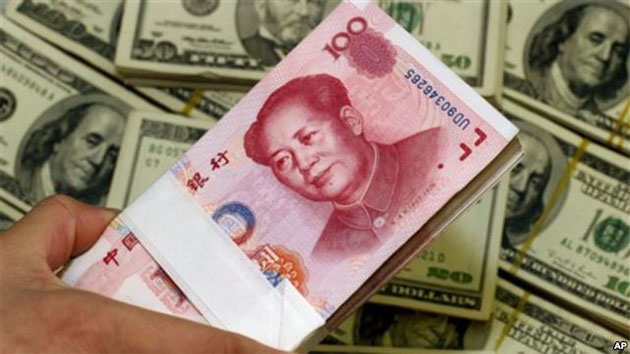Poverty alleviation is most likely to bear the desired fruit and the gap between rural and urban areas will be bridged in near future in China. The colossal companies and mammoth construction projects in many provinces of China indicate this fact.
Chinese government seeks to alleviate poverty and build a prosperous life for all the Chinese in 2020. The dream for building a moderate and economically balanced society is most likely to come true if one tours both rural and urban areas in China. Leaving the agrarian economy behind, rural areas are also being industrialized swiftly. The gigantic companies equipped with modern technology, which once seemed an unachievable dream in rural areas, exist there in large number. The huge infrastructures and skyscrapers in Chinese provinces will drop your jaw.
On my recent trip to Sichuan province, I was highly amazed by colossal companies operating not only to promote the living standard of locals but also to connect this province with the world through constructing railway stations and enhancing trade. I was astonished to visit Oracle (Tianfu New Area)Technical Talent Innovation and Entrepreneurship Base, West China Modern Logistic Port, New Century Global Center and China Railway Express (CRE), to name but a few. The first enterprise (Oracle) seeks to upgrade traditional companies, and provide the management consultation and investment consultation services.
West China Modern Logistic Port, which is based in Suining City of Sichuan province, gears to serve west China and link coastal areas. This port develops significant industries as modern logistics, trade and circulation, e-commerce, and manufacturing. With its inauguration in 2008, this port has introduced 93 platform projects, 38 projects are under construction, 36 projects have been completed and 14 projects are being prepared. China Railway Express (CRE), based in Chengdu city of Sichuan province, connects Sichuan with Lodz station – which is the largest and most modern railway in the city of Lodz, Poland – via Kazakhstan, Russia, Belarus and other countries with the total length of 9826 km. Carrying goods from Chengdu to Lodz will take place in 10 days, much faster than by sea and much cheaper than by air, and then it will take one to three days to distribute goods to anywhere in Europe. In 2016, CRE was graded the first among all other railway expresses in China for having 460 runs and 1000 runs were planned in 2017. It forms a cross-border network of “one main line, multiple auxiliary lines and direct arrival at many stations.”CRE has 16 lines all over the Europe – including Germany, Italy, and Czech Republic – where it carries cargoes directly. According to a member of CRE’s staff, the last line was opened in April 12 this year. CRE achieves a win-win situation for China and Europe and will promote role of merging the Yangtze River Economic Zone and the Silk Road Economic Belt.
China seeks to promote connectivity and deepen reform and opening up. Chinese economists believe that “if you want to be rich, you must build roads at first”. The transportation construction is the mainstay of economic development. Therefore, Chinese enterprises reinforce sea, land and air constructions so as to facilitate trade between China and the rest of the world.
To view huge companies with thousands of employees across China, industrial parks, mammoth projects and constructions, and innovative industries, one will believe that alleviating poverty will be a piece of cake for Chinese government. For example, only Sichuan province has established business ties with over 221 countries and regions and 17 countries have their consulate general there. Currently, China is carrying out a new round of Western Development and the “Belt and Road” initiative, Yangtze River economic belt and other development strategies to catalyze economic development in this province.
Chinese businesspersons and economists are highly creative. For instance, Xingfu Ancient Village, which has only 204 residents, was opened for business in 2016. Receiving 48,000 visitors, its revenue hit a record high up to four million yuan in two months. As a result of this rural tourist destination, the income of each household increased 30 per cent last year. In the past, residents were supposed to pay to take their agricultural products to cities but now they are bought by tourists. Traditional inns with nice facilities are installed there for tourists to pass their nights and locals are recruited in those inns. Hence, this innovation created job for locals in remote areas and facilitated their business. In short, the integration of agriculture and tourism has put the village on a fast track for the benefits of local residents. Thus, industrialization and technological advancements, connectivity and innovation will alleviate poverty and build a prosperous life for the Chinese in near future. Considering the aforementioned facts, China can be a perfect economic and business model for developing and under-developed countries, including Afghanistan.
Home » Opinion » The Reasons behind China’s Swift Economic Development
The Reasons behind China’s Swift Economic Development
| Hujjatullah Zia

